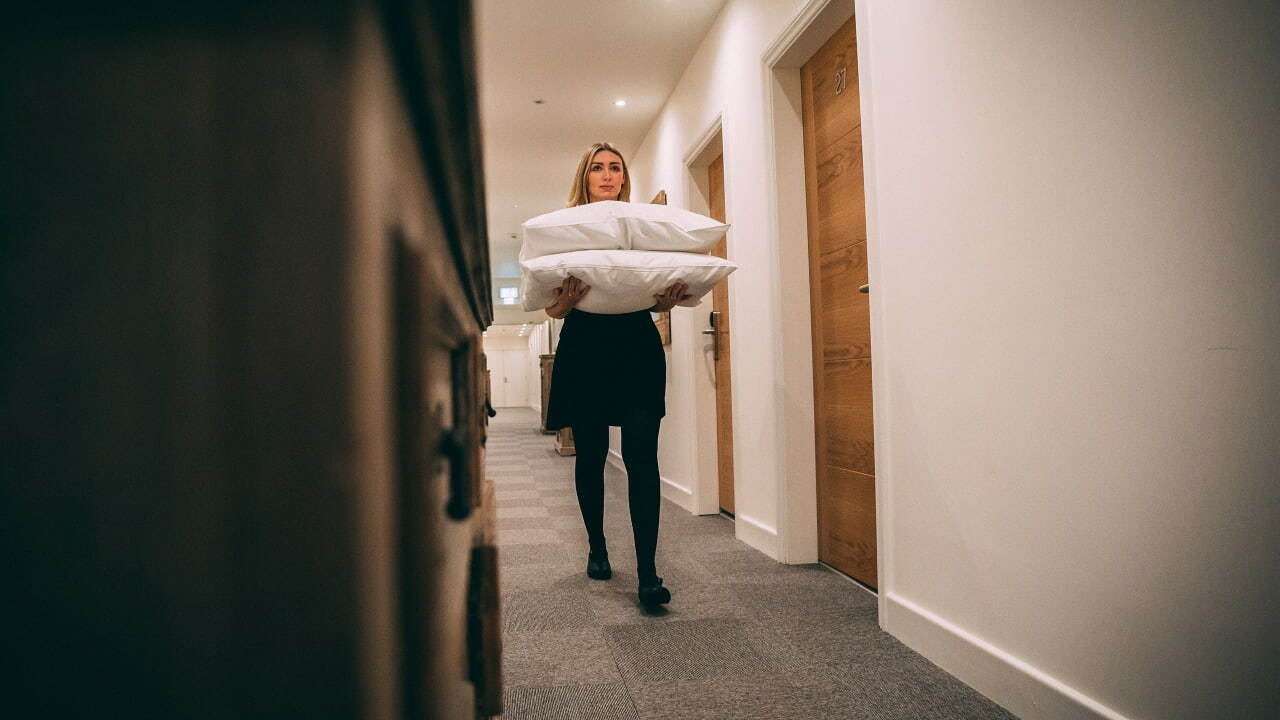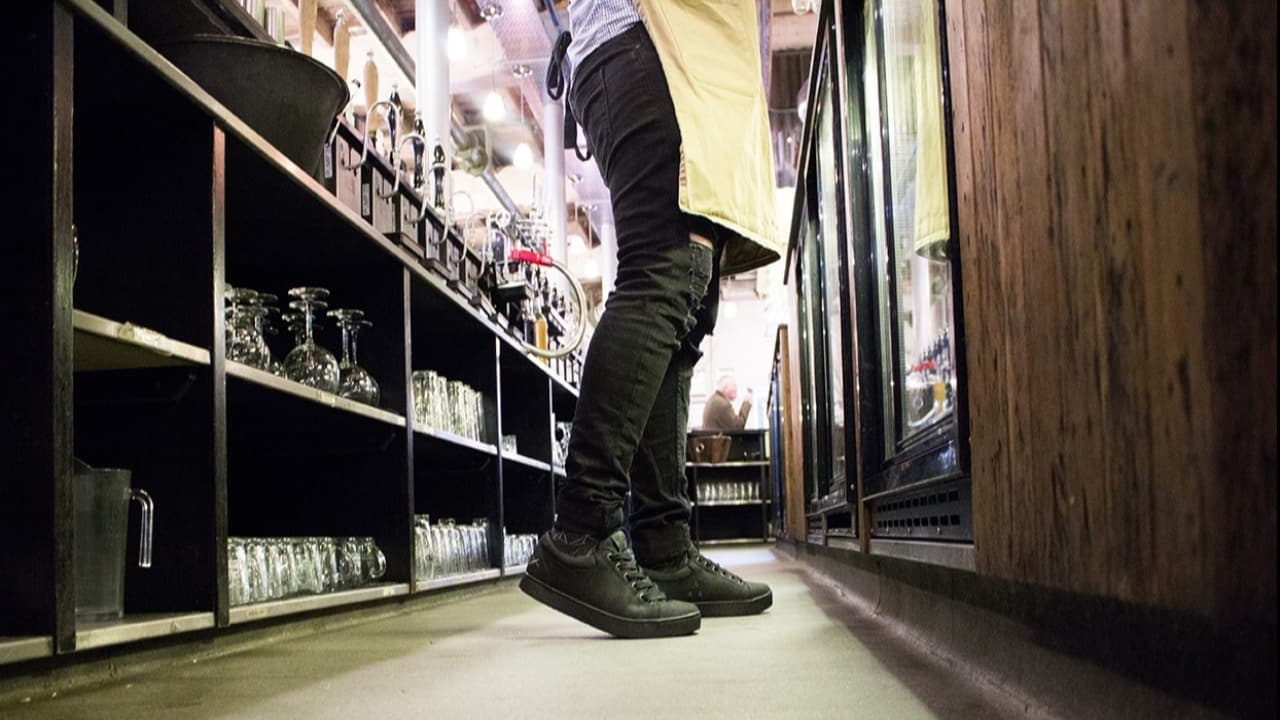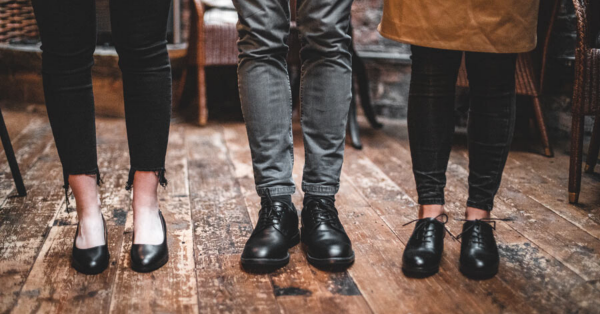10 Tips For Preventing Slips, Trips and Falls in the Workplace
The risk of slips, trips and falls impacts every workplace. From slippy floors to misplaced boxes, there are various hazards that can put your employees at risk of injury. However, proactively managing your workplace can help to reduce the chances of an incident occurring.
Our top tips for preventing slips, trips and falls include:
- Identify potential dangers
- Maintain a well-organised workplace
- Implement safety signs and labels
- Wear adequate footwear
- Provide proper training
- Ensure equipment is in working order
- Regularly review working surfaces
- Clean immediately
- Check lighting
- Have a thorough safety plan in place
We've also answered a range of frequently asked questions related to slips, trips and falls below.

Identify potential dangers
The first step you should take is to attempt to identify the most common causes of risk. Take a walk around and note down often-overlooked hazards such as loose cables, empty boxes, and uneven floors. You may also want to speak to your staff as they can offer further insight into the risks faced on a daily basis.
Once a thorough check has been completed, you'll be better prepared in alleviating these issues to provide a safer workplace for your employees.
Maintain a well-organised workplace
A well-organised workplace is a safer workplace, so you'll want to keep on top of misplaced items or loose equipment to reduce the risks of an incident occurring. For this, you'll need to be proactive and:
- Ensure equipment is placed in its proper storage location when it's not in use
- Put litter in the bin, and empty bins before they overflow
- Attempt to hide cables whenever possible and place them in protective covers to prevent damage
- Properly close the doors to cupboards, drawers and other storage compartments once you've got what you need
Implement safety signs and labels
Safety signs and labels are vital pieces of equipment that alert your staff of any known hazards, helping to prevent the risk of slips, trips and falls when properly implemented. For example, warehouses implement safety signs to highlight hazardous areas, while a caterer uses a safety sign to indicate any wet floors.
By marking these potential hazards, it lets everyone know to avoid certain areas so they can continue working safely. It's also important to make sure the signs are clearly labelled so everybody knows what they mean.
Wear adequate footwear
An easy way of preventing slips, trips and falls at work is by ensuring that your workforce has adequate footwear for the job. We'd recommend wearing slip-resistant footwear that meets relevant shoe tread recommendations.
When looking for footwear, you'll need to take into account the level of slip resistance a shoe offers, as well as additional safety features that can help to keep you safe at work. One way to do this is by inspecting the footwear's safety code, as it tells you which features they have and what tests have been passed. You may also want to consider the shoe's style - if you're on your feet for extended periods of time, you may prefer comfortable athletic or casual shoes for example.
Once you've found a suitable pair, it's important to keep them in good shape. This could mean regularly cleaning them and checking how much tread they have left to ensure they're ready to reduce the risks of any hazards.
Provide proper training
It can be easy to assume that your staff know how to use equipment or what to do in certain situations, but this may not always be the case. Providing suitable training sessions for your employees can go a long way in helping to reduce the risks of slips, trips and falls.
It may be as simple as showing a member of your team where to take equipment once they're done using it, or how to properly report hazards to a relevant manager. These small steps ensure that your staff are prepared to find and deal with hazards before they lead to injury.
Ensure equipment is in working order
Whether you use a piece of equipment on a day-to-day basis or less frequently, it's vital for it to be properly inspected and maintained on a regular basis. For example, a vertical lift table that's been thoroughly inspected is much less likely to be at fault for a fall incident than one that's never been checked.
If issues are identified when inspecting equipment, you'll need to take it out of service until a replacement or repair has been sorted. Ensure that all staff are aware of the broken equipment and implement measures such as a sign to ensure nobody attempts to use it.
Regularly review working surfaces
The type of flooring your workplace has can make a huge difference when it comes to slips, trips and falls, and you'll want to ensure that the appropriate flooring surface is in-place. For example, if you work where spillages are likely to occur, you may want to consider fitting resilient flooring and non-slip mats to provide additional grip.
The general condition of flooring is also important, so it's important to regularly check for cracks, holes or other damage. If issues are identified, you can make your staff aware and get it repaired or replaced before an incident occurs.

Clean immediately
Whether it’s oil in a kitchen, sawdust in a warehouse or cleaning liquid in a hotel, there are various substances that are a very common risk to your staff. When a spillage does occur, it should be cleaned up immediately and thoroughly.
Spillages should never be left unattended, so one staff member needs to stay at the scene while another retrieves the cleaning equipment and safety signs. Once the area has been cleaned, the warning signs should remain in place until it's completely dry and safe to use.
Check lighting
Your eyes are often your best friend, and when visibility is low, it can be difficult to spot potential hazards before it's too late. Adequate lighting in all areas of your workplace is vital, especially when it comes to darker, winter months.
It's worthwhile regularly checking the existing lighting in your workspace to ensure that it's in good working order, but we'd also recommend considering where additional lighting could be implemented to improve visibility.
Good lighting proves to be particularly helpful where risk is high but visibility is low. For example, a workforce that regularly works outside in the dark would benefit from heavy lighting to help them spot slip hazards such as leaves and puddles.
Have a thorough safety plan in place
Now that your equipment has been checked, your staff are trained, and your workplace is clean well-organised you'll need a structured safety plan to ensure it stays that way. This should include the following:
- Slips, trips and falls risk assessments
- A thorough hazard-spotting checklist
- Regular training sessions to keep staff up-to-date
- A rota for checking equipment and work surfaces
Whilst the majority of incidents and accidents are preventable, there's still a chance that one may occur. It's important for you to have a safety protocol to follow when this does happen, ensuring that involved members of staff are kept as safe as possible.
Frequently Asked Questions
How many people suffer from slips, trips and falls at work?
The latest figures from the Labour Force Survey show that 565,000 workers sustained a non-fatal injury in 2021/2022 according to self-reports, while 61,713 non-fatal injuries were reported by employers.
Slips, trips and falls are very common forms of hazard in a workplace and can lead to financial implications for your business and employee absence. It's important to keep on top of the risks to ensure your staff are as safe as possible.
What is the best way to prevent slips, trips and falls?
There's no singular way of preventing slips, trips and falls. Instead, you'll need to implement a wider safety plan to combat the various causes of these incidents.
This could include checking equipment, regularly tidying your workplace and cleaning up immediately following a spillage, as mentioned above.
What are slips, trips and falls?
A slip is where the traction between the floor and your feet is broken, causing you to lose your footing. A trip is where an object causes you to fall to the ground. A fall is where you come down suddenly and unintentionally.
What are the main causes of slips, trips and falls?
There are plenty of factors that can cause slips, trips and falls but the most common include:
- Damaged flooring
- Poor storage of equipment and tools
- Inadequate cleaning of spillages and other contaminants
- Unsuitable footwear
- Amount of light
- Poorly maintained equipment
Reduce the risks of slips, trips and falls with slip-resistant footwear
Slips, trips and falls are one of the most common health and safety risks in a workplace but you should now be better prepared to reduce the chances of an incident occurring.
From shoes for chefs to safety footwear for logistics drivers, our collection of anti-slip shoes and boots is suitable for a wide variety of job roles and workplaces, helping to prevent you from becoming a victim of a slip, trip or fall.

